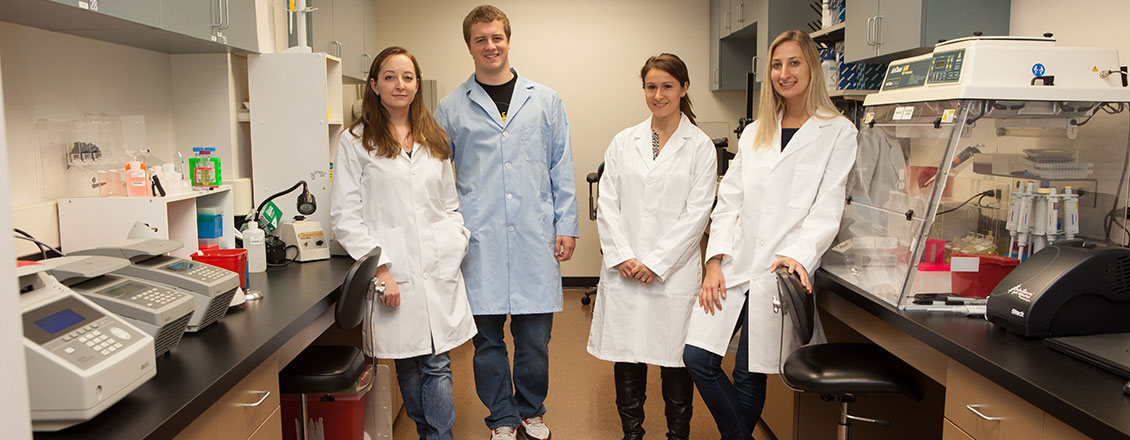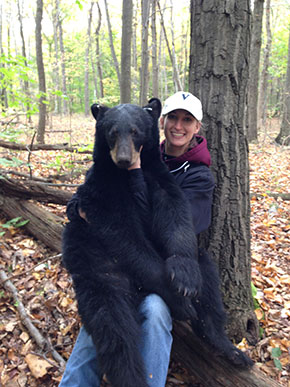
Genetic Structure of the American Black Bear
Genetic Structure of the American Black Bear (Ursus americanus) in New Jersey
 By Nicole Chinnici
By Nicole Chinnici
Black bears in New Jersey are a contiguous population. Over the last 30 years, NJ’s black bear population has been increasing and expanding its range southward and eastward from the forested areas of northwestern NJ.
The population has grown due to increased black bear habitat.
We evaluated aspects of genetic diversity and gene flow for 4 management zones in NJ using genotypic data from 9 microsatellite loci.
Measures of genetic diversity were estimated at the individual level, as well as within and between management areas.
Average expected heterozygosity, average number of alleles, total number of alleles, number of unique alleles, average variance in number of repeats, and average range in number of repeats were determined from microsatellite data using the program Cervus 3.0.
A total of 84 alleles were observed at the 9 microsatellite loci amplified in a multiplex reaction.
The degree of variation ranged from 6 to 12 alleles per locus, with an average of 9.33 alleles per population at each locus.. Results from STRUCTURE 2.3.4 suggest that NJ black bears represent a panmictic population.
Contact Us
Contact Information
- Campus Address
- ESU Innovation Center
- Phone:
- (570) 422-7892
- Fax:
- (570) 422-3724 (Fax)
- Title of Department Leader
- Director
- Name
- Nicole Chinnici
- E:
- nchinnici@esu.edu
- Phone:
- (570) 422-7891



